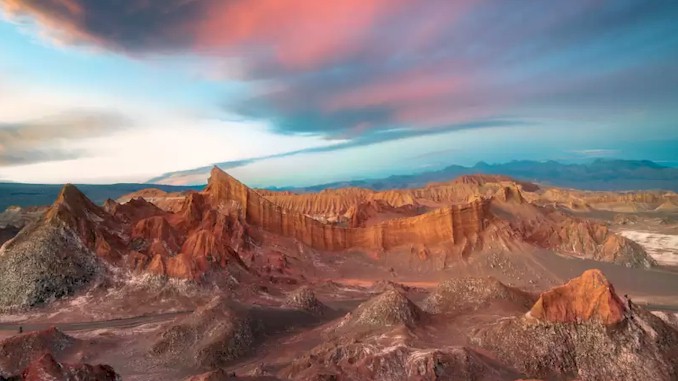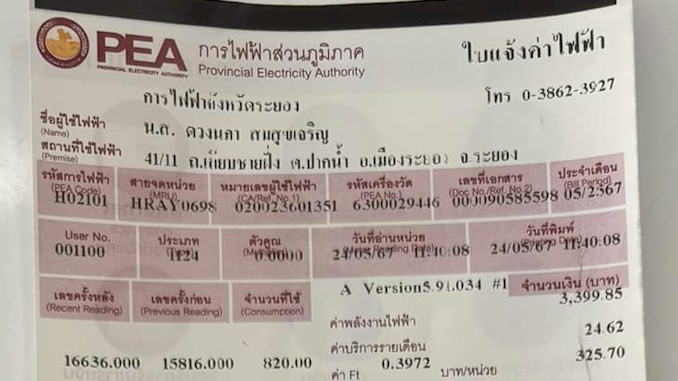Uncovering the Ideal Time to Visit Atacama
I went on an amazing vacation to the Atacama Desert. It’s a very popular destination and many people go there each year. If you’re one of those people, then you’ll want to know the best time to visit. Choosing the ideal time to visit can make a huge impact on your vacation. I’ve been to the Atacama Desert and this article will help you decide when to visit.
The best time to visit the Atacama Desert is during the months of March to May and September to November. These shoulder seasons offer comfortable temperatures, clear skies, and fewer crowds compared to the peak tourist season. However, if you’re interested in witnessing the blooming of desert flowers, plan your trip between late August and early November. Keep in mind that the Atacama Desert is a year-round destination, and each season has its unique attractions and challenges.
In the upcoming paragraphs, you will discover more valuable information about the best time to visit the Atacama Desert. Whether you are an experienced traveler or embarking on your first international adventure, these insights and recommendations will help you plan an unforgettable trip to the Atacama. Keep reading to learn more.
The Shoulder Seasons: The Best Time to Visit the Atacama Desert
If you’re planning a trip to the Atacama Desert, timing is key. While the desert is a year-round destination, certain times of the year are more ideal than others. The best time to visit the Atacama Desert is during the shoulder seasons, which are the periods between the peak tourist season and the low season. These seasons offer the best weather conditions, fewer crowds, and better rates for flights, accommodations, and tours.
The shoulder seasons in the Atacama Desert fall between the months of March to May and September to November. During these times, you can expect comfortable temperatures during the day and cooler temperatures at night, making it perfect for outdoor activities and exploring the desert. In the fall, temperatures are mild, with average highs in the mid-70s°F (mid-20s°C) and lows in the 40s°F (5-10°C) at night. During the spring shoulder season, temperatures range from the mid-70s°F (mid-20s°C) during the day to the 40s°F (5-10°C) at night.
In addition to the comfortable weather, the shoulder seasons also offer the advantage of fewer crowds. During the peak tourist season, which runs from December to February, the desert can be quite crowded, making it difficult to enjoy the attractions without feeling overwhelmed. By visiting during the shoulder season, you can enjoy a more personalized experience and have more opportunities to interact with locals and explore the area at their own pace.
Another advantage of visiting during the shoulder seasons is the better availability of flights, accommodations, and tours, often at a lower price. This is because the demand for travel during the shoulder seasons is typically lower than the peak season. Moreover, you can enjoy more flexibility in terms of scheduling tours and activities, as you are less likely to be fully booked.
It’s important to note, however, that the weather patterns in the Atacama Desert can be unpredictable, and occasional changes in temperature and precipitation are possible even during the shoulder seasons. Therefore, it’s recommended to check the weather forecast before your trip and pack accordingly, including layers for cooler evenings and warm clothes for higher altitudes.
Overall, the shoulder seasons are the best time to visit the Atacama Desert. With its comfortable weather conditions, fewer crowds, and better availability and rates for flights, accommodations, and tours, the shoulder seasons offer visitors the opportunity to experience the natural beauty of the Atacama Desert in a personalized and authentic way.
March to May: Exploring the Atacama Desert in the Fall
As someone who has traveled to the Atacama Desert during the fall season, I can attest that it’s an ideal time to visit this otherworldly landscape. The fall season runs from March to May and offers comfortable temperatures, fewer crowds, and unique experiences that you won’t find during other times of the year.
During the fall months, temperatures in the Atacama Desert are mild, with average highs in the mid-70s°F (mid-20s°C) and lows in the 40s°F (5-10°C) at night. These temperatures make it perfect for outdoor activities such as hiking, stargazing, and exploring the many geological formations that the desert is known for. With the cooler evenings, visitors can also enjoy a peaceful and refreshing night’s sleep after a day of adventure.
The fall season also offers visitors the advantage of fewer crowds. While the peak tourist season in the Atacama Desert runs from December to February, the fall season is less busy, giving visitors the opportunity to explore the area at their own pace. With fewer people around, you can truly immerse yourself in the natural beauty of the desert and enjoy a more personalized experience.
One of the unique experiences that fall visitors can enjoy is the blooming of the desert wildflowers. After the winter rains, the desert comes to life with a colorful array of flowers and plants, creating a breathtaking sight. It’s an opportunity to see the desert in a completely different light and appreciate the diversity of life that thrives in this harsh environment.

Another attraction that shouldn’t be missed during the fall season is the El Tatio Geysers. These geysers are located at an altitude of 4,200 meters and are one of the highest-elevation geyser fields in the world. During the fall months, the geysers put on a spectacular display, with steam rising from the earth and creating a surreal landscape. It’s an unforgettable experience that you won’t want to miss.

You may think that March to May is actually spring, but since the Atacama Desert is in the Southern Hemisphere it’s actually fall.
Visiting the Atacama Desert during the fall season offers a unique and unforgettable experience. With comfortable temperatures, fewer crowds, and the chance to witness the blooming of the desert wildflowers and the El Tatio Geysers, it’s an opportunity to explore this incredible destination in a truly special way.
September to November: Enjoying the Atacama Desert in the Spring
Having explored the Atacama Desert during the spring months, I can confidently say that it’s an excellent time to visit this unique landscape. The spring season runs from September to November and offers visitors comfortable temperatures, clear skies, and unique natural phenomena that are not to be missed.
During the spring months, the Atacama Desert experiences a warm, dry climate, with average temperatures ranging from 20°C to 30°C (68°F to 86°F) during the day and cooling off to a comfortable 10°C to 15°C (50°F to 59°F) at night. These temperatures make it perfect for outdoor activities such as trekking, birdwatching, and exploring the region’s diverse geological formations.
One of the unique natural phenomena to witness during the spring season is the migration of the Humboldt penguins. These adorable creatures make their way up from the southern coast of Chile to breed in the desert’s Altiplano region. It’s an unforgettable experience to see these penguins in their natural habitat, surrounded by the breathtaking landscapes of the Atacama Desert.
Another highlight of visiting the Atacama Desert during the spring season is the clear skies, which make it an ideal destination for stargazing. The Atacama Desert is home to some of the world’s best observatories, and visitors can enjoy guided tours to see the stars and planets up close. The Milky Way is particularly visible during the spring months, creating a stunning spectacle that will leave you in awe.
Spring is also an excellent time to visit the Valle de la Luna, or the Moon Valley, located just outside the city of San Pedro de Atacama. This surreal landscape is a must-visit destination, with its towering sand dunes, dramatic rock formations, and unique salt formations. Visitors can take guided tours to explore the valley and witness the spectacular colors of the sunset.
Visiting the Atacama Desert during the spring season is a wonderful way to experience this otherworldly destination. With comfortable temperatures, clear skies for stargazing, and unique natural phenomena such as the migration of the Humboldt penguins and the Valle de la Luna, it’s an opportunity to explore the Atacama Desert in all its glory.
The Blooming of Desert Flowers: When to Visit for Spectacular Scenery
Having explored the Atacama Desert extensively, I can attest to the beauty of its blooming desert flowers. If you’re looking to witness this stunning natural phenomenon, it’s important to know when to plan your visit.
Typically, the best time to see the blooming of desert flowers in the Atacama Desert is during the months of September to November, which coincide with the spring season. During this time, the desert landscape is transformed into a sea of vibrant colors as different species of wildflowers bloom.
As someone who has visited the Atacama Desert during the spring season, I highly recommend a visit to the Llano de la Paciencia, a flat plain covered with a blanket of wildflowers, including the famous Garra de León, or Lion’s Claw. The bright yellow flowers of this plant resemble a lion’s paw and create a truly stunning sight against the desert backdrop.
Another must-visit destination for viewing desert flowers is the Quebrada de Jere, a narrow canyon located near San Pedro de Atacama. The canyon is home to a variety of cacti and other desert plants that bloom in a stunning array of colors during the spring season.
It’s important to keep in mind that the blooming of desert flowers is dependent on the amount of rainfall in the region. If there has been little rainfall, the blooming may be sparse, and if there has been a lot of rainfall, it may be more abundant. Checking with local guides or the tourism office can help ensure that you’re visiting during a time when the flowers are expected to bloom.
Overall, experiencing the blooming of desert flowers in the Atacama Desert is a truly special and unique experience. With the right timing and a bit of planning, you can witness this stunning natural phenomenon and add a beautiful touch to your Atacama adventure.
Year-Round Attractions: Exploring the Atacama Desert Beyond the Shoulder Seasons
As someone who has spent a significant amount of time in the Atacama Desert, I can confidently say that there are plenty of year-round attractions that are worth exploring, even beyond the shoulder seasons of fall and spring.
In the summer months of December to February, temperatures in the Atacama Desert can reach over 30°C (86°F) during the day, making it a challenging time to explore. However, there are still some attractions that are worth visiting during this time, such as the Laguna Cejar. This saltwater lagoon is located near San Pedro de Atacama and is known for its vivid turquoise color and high salt concentration, which makes it possible to float effortlessly on the water’s surface.
Another year-round attraction in the Atacama Desert is stargazing. Due to the region’s high altitude and lack of light pollution, it’s considered one of the best places in the world for astronomy. Many tour operators offer stargazing tours that allow visitors to observe the stars and planets through high-powered telescopes. The best time for stargazing is during the dry season from May to September when the skies are clearest.
For those interested in flora and fauna, the Atacama Desert offers a surprising array of plant and animal life that has adapted to the harsh desert conditions. During the summer months, the desert comes to life with blooming cacti and other plant species that create a vibrant display of color. Meanwhile, wildlife such as vicuñas, foxes, and even flamingos can be spotted year-round in the region’s lagoons and salt flats.
In addition to natural attractions, the Atacama Desert is home to numerous cultural and historical sites that offer insight into the region’s rich history. The Museo del Meteorito, for example, is a small museum located in San Pedro de Atacama that showcases a collection of meteorites that have been found in the region. The museum also provides information on the scientific research being done on meteorites and their potential impact on our understanding of the universe.
The Atacama Desert offers year-round attractions that are sure to captivate visitors with their unique landscapes, rich history, and diverse culture. Whether you’re interested in stargazing, exploring ancient archeological sites, or simply taking in the natural beauty of the region, there’s something for everyone to enjoy beyond the shoulder seasons.
Here’s a table summarizing the pros and cons of visiting the Atacama Desert in each season:
| Season | Pros | Cons |
|---|---|---|
| Summer (December – February) | Clear skies for stargazing Warm temperatures for outdoor activities | Hot temperatures during the day Crowds and higher prices |
| Fall (March – May) | Cooler temperatures for outdoor activities Fewer crowds and lower prices Blooming desert flowers | Windy conditions during some parts of the day |
| Winter (June – August) | Ideal conditions for stargazing Mild daytime temperatures for outdoor activities | Cold temperatures at night Crowds and higher prices |
| Spring (September -November) | Cooler temperatures for outdoor activities Fewer crowds and lower prices Blooming desert flowers | Possibility of occasional rain |
It’s worth noting that while each season has its pros and cons, the Atacama Desert is a stunning destination that can be visited year-round. Ultimately, the best time to visit will depend on your personal preferences and travel style.







